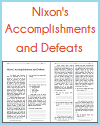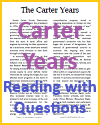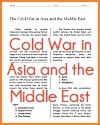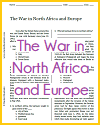Nixon, Vietnam, and the Cold War |
Determined to achieve "peace with honor," Nixon slowly
withdrew American troops while redoubling efforts to equip the
South Vietnamese army to carry on the fight. He also ordered
strong American offensive actions. The most important of these
was an invasion of Cambodia in 1970 to cut off North Vietnamese
supply lines to South Vietnam. This led to another round of
protests and demonstrations. Students in many universities took
to the streets. At Kent State in Ohio, the national guard troops
who had been called in to restore order panicked and killed four
students.
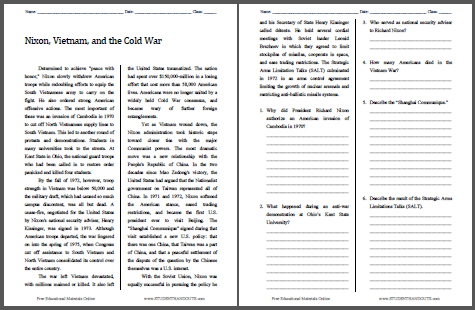 By the fall of 1972, however, troop strength in Vietnam was
below 50,000 and the military draft, which had caused so much
campus discontent, was all but dead. A cease-fire, negotiated
for the United States by Nixon's national security adviser,
Henry Kissinger, was signed in 1973. Although American troops
departed, the war lingered on into the spring of 1975, when
Congress cut off assistance to South Vietnam and North Vietnam
consolidated its control over the entire country. By the fall of 1972, however, troop strength in Vietnam was
below 50,000 and the military draft, which had caused so much
campus discontent, was all but dead. A cease-fire, negotiated
for the United States by Nixon's national security adviser,
Henry Kissinger, was signed in 1973. Although American troops
departed, the war lingered on into the spring of 1975, when
Congress cut off assistance to South Vietnam and North Vietnam
consolidated its control over the entire country.The war left Vietnam devastated, with millions maimed or killed. It also left the United States traumatized. The nation had spent over $150,000-million in a losing effort that cost more than 58,000 American lives. Americans were no longer united by a widely held Cold War consensus, and became wary of further foreign entanglements. Yet as Vietnam wound down, the Nixon administration took historic steps toward closer ties with the major Communist powers. The most dramatic move was a new relationship with the People's Republic of China. In the two decades since Mao Zedong's victory, the United States had argued that the Nationalist government on Taiwan represented all of China. In 1971 and 1972, Nixon softened the American stance, eased trading restrictions, and became the first U.S. president ever to visit Beijing. The "Shanghai Communique" signed during that visit established a new U.S. policy: that there was one China, that Taiwan was a part of China, and that a peaceful settlement of the dispute of the question by the Chinese themselves was a U.S. interest. With the Soviet Union, Nixon was equally successful in pursuing the policy he and his Secretary of State Henry Kissinger called détente. He held several cordial meetings with Soviet leader Leonid Brezhnev in which they agreed to limit stockpiles of missiles, cooperate in space, and ease trading restrictions. The Strategic Arms Limitation Talks (SALT) culminated in 1972 in an arms control agreement limiting the growth of nuclear arsenals and restricting anti-ballistic missile systems. |
Click here to print. Answer Key: (1) To cut off North Vietnamese supply lines to South Vietnam; (2) National guard troops who had been called in to restore order panicked and killed four students; (3) Henry Kissinger; (4) Over 58,000; (5) Established a new U.S. policy--that there was one China, that Taiwan was a part of China, and that a peaceful settlement of the dispute of the question by the Chinese themselves was a U.S. interest; (6) Arms control agreement limiting the growth of nuclear arsenals and restricting anti-ballistic missile systems. |
 |
|---|
Text courtesy of the U.S. State Department, Bureau of International Information Programs, 2005 |


